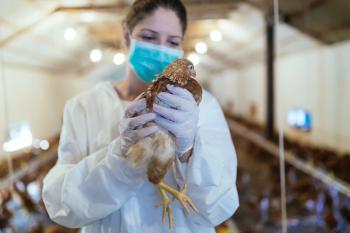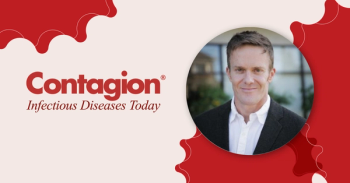
Lower-Dose, Shorter-Duration of Amoxicillin Noninferior for Treating CAP in Children
Lower-dose amoxicillin was noninferior to higher doses for treating children diagnosed with community-acquired pneumonia, according to a new study that also showed that shorter treatment duration was noninferior to longer treatment duration.
Lower-dose amoxicillin was non-inferior to higher doses and shorter duration was non-inferior to longer duration for treating children with community-acquired pneumonia (CAP), a new study found.
The multicenter randomized trial dubbed CAP-IT, published in
“Children with uncomplicated pneumonia diagnosed in hospital in settings such as the UK can effectively and safely be treated with antibiotics for 3 days at currently used doses,” lead author Julia A. Bielicki, PhD, Paediatric Infectious Diseases Research Group, St George's University of London, told Contagion.
Study participants were randomized into groups with 410 receiving 35-50 mg/kg per day of amoxicillin and 404 receiving 70-90 mg/kg/day of amoxicillin on discharge. Duration of treatment was three days for 413 participants and seven days for 401.
Primary outcome of re-treatment for respiratory infection within 28 days occurred in 12.6% of patients in the lower-dose group and 12.4% in the higher-dose group. No difference was reported between the two duration groups, with re-treatment occurring in 12.5% of those who received treatment for 3 or 7 days.
“The fact that lower doses are not worse than higher doses was somewhat surprising when considering very limited existing data from previous trials,” Bielicki said. “This suggested that higher doses might be better, but the research was done in places with much higher levels of bacterial resistance.”
Secondary outcomes included parent-reported symptoms, adverse events and phenotypic resistance. Differences were reported for cough duration, with a median of 12 days among the three-day treatment group and 10 days among the seven-day treatment group (hazard ratio, 1.2 [95% CI, 1.0 to 1.4]; P = .04), and sleep disturbed by cough (median, 4 days vs 4 days; HR, 1.2 [95% CI, 1.0 to 1.4]; P = .03).
Among a subgroup of children with severe disease, the primary end point occurred in 17.3% of lower-dose recipients compared with 13.5% of higher-dose recipients and among 16% of the three-day treatment group and 14.7% of the seven-day group.
Limitations of the study suggest it should not be considered generalizable to all children depending on factors including disease severity, treatment setting and prior antibiotics received.
“I am extremely grateful to all the children and their families who participated in the trial as well as impressed with all the work done by nurses and doctors at the participating hospitals through the PERUKI and GAPRUKI networks,” Bielicki said. “CAP-IT demonstrates that large strategic trials to inform the optimal choice of drug, dose and duration of antibiotics to treat common childhood infections are feasible, so that we can improve our understanding of how to use these precious drugs.”
She said the study could inform further research.
“Questions similar to those addressed in CAP-IT are also relevant for other childhood infections both in high-income and even more so in low- and middle-income settings,” Bielicki said. “Hopefully, CAP-IT will motivate researchers to work in this area and to develop innovative approaches to study how to improve the way we use antibiotics to treat children."
Newsletter
Stay ahead of emerging infectious disease threats with expert insights and breaking research. Subscribe now to get updates delivered straight to your inbox.





















































































































































































































































































